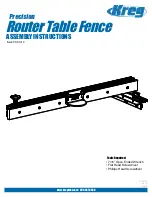
7-2
Catalyst 2900 Series XL and Catalyst 3500 Series XL Software Configuration Guide
78-6511-08
Chapter 7 Configuring the Switch Ports
Changing the Port Speed and Duplex Mode
Changing the Port Speed and Duplex Mode
Caution
If you reconfigure the port through which you are managing the switch, a Spanning Tree Protocol (STP)
reconfiguration could cause a temporary loss of connectivity.
Note
The CPE Ethernet port settings have special considerations and different default settings from the switch
10/100 ports. For this information, see the CPE considerations in the
“CPE Ethernet Links” section on
page 7-21
.
Follow these guidelines when configuring the duplex and speed settings:
•
Gigabit Ethernet ports are always set to 1000 Mbps but can negotiate full or half duplex with the
attached device.
•
Gigabit Ethernet ports that do not match the settings of an attached device lose connectivity and do
not generate statistics.
•
Asynchronous Transfer Mode (ATM) ports are always set to full duplex and do not autonegotiate
duplex or speed settings.
•
GigaStack-to-GigaStack stack connections operate in half-duplex mode, and
GigaStack-to-GigaStack point-to-point connections operate in full-duplex mode.
•
If STP is enabled, the switch can take up to 30 seconds to check for loops when a port is
reconfigured. The port LED is amber while STP reconfigures.
Connecting to Devices That Do Not Autonegotiate
To connect to a remote 100BASE-T device that does not autonegotiate, set the duplex setting to Full or
Half, and set the speed setting to Auto. Autonegotiation for the speed setting selects the correct speed
even if the attached device does not autonegotiate, but the duplex setting must be explicitly set.
To connect to a remote Gigabit Ethernet device that does not autonegotiate, disable autonegotiation on
the local device, and set the duplex and flow control parameters to be compatible with the other device.
Half Duplex with Back Pressure
Half-duplex back pressure ensures retransmission of incoming packets if a half-duplex switch port is
unable to receive incoming packets. When back pressure is enabled and no buffers are available to a port,
the switch sends collision frames across the affected port and causes the transmitting station to resend
the packets. The switch can then use this retransmission time to clear its receive buffer by sending
packets already in the queue.
Full Duplex with Flow Control
Full-duplex flow control is a function whereby the sending station does not send data or control
information faster than the receiving station can accept it. This prevents the loss of outgoing packets
during transmission. If the switch is sending packets faster than the attached device can receive and
process them, the attached device sends pause-control frames when its port buffer becomes full. When
















































